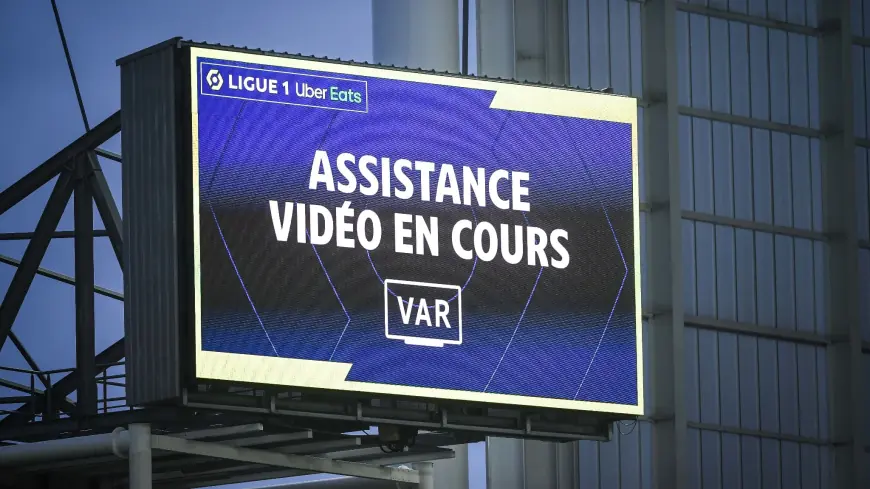The Impact of Technology in Ligue 1: VAR, Analytics, and Beyond
Explore how technology is revolutionizing Ligue 1 in 2024/2025, from VAR to advanced analytics. Learn about its influence on French football.

Football is evolving rapidly, and Ligue 1 is at the forefront of embracing technological advancements. From the introduction of VAR (Video Assistant Referee) to the widespread use of data analytics, technology has significantly reshaped the way the game is played, officiated, and analyzed. This article delves into the transformative impact of technology on Ligue 1 during the 2024/2025 season and what it means for the future of French football.
VAR: A Game-Changer for Fair Play
Since its introduction, VAR has become an integral part of football, and Ligue 1 is no exception. The system aims to minimize human error in critical decisions, ensuring fair play on the pitch.
Key Aspects of VAR in Ligue 1:
-
Goal Decisions: VAR has eliminated numerous controversial goal decisions, ensuring that every goal awarded is legitimate.
-
Offside Calls: Advanced technology, including semi-automated offside detection, has reduced the margin for error in offside rulings.
-
Penalty Reviews: Referees now have the ability to review contentious penalty incidents, reducing disputes.
-
Red Card Incidents: Serious foul play and violent conduct are closely monitored, maintaining player safety.
2024/2025 Insights:
VAR has played a crucial role in pivotal matches this season. For instance, PSG’s clash with Marseille saw a penalty overturned upon review, a decision that significantly impacted the game’s outcome. While debates over its application persist, the overall consensus is that VAR has improved decision-making consistency in Ligue 1.
Analytics: Shaping Tactics and Performance
Data analytics has revolutionized football, providing coaches, players, and analysts with valuable insights to enhance performance. Ligue 1 clubs are now leveraging cutting-edge tools to gain a competitive edge.
How Analytics Is Used in Ligue 1:
-
Player Performance Tracking: Metrics such as distance covered, sprint speed, and pass accuracy are monitored to evaluate player contributions.
-
Opponent Analysis: Teams analyze opposition tactics to identify strengths and weaknesses, tailoring their strategies accordingly.
-
Injury Prevention: Wearable technology tracks player workloads, helping medical teams prevent injuries.
-
Scouting and Recruitment: Advanced algorithms identify talent based on performance data, aiding in smarter recruitment.
Notable Examples:
-
RC Lens: Their analytical approach has been credited for their impressive defensive structure, with data-driven training sessions improving positioning and transitions.
-
Monaco: The club’s scouting department uses AI-powered tools to identify young talent across Europe, contributing to their reputation as a talent factory.
Goal-Line Technology: Ensuring Accuracy
Goal-line technology was one of the earliest technological innovations adopted by Ligue 1. It guarantees that every goal-line decision is accurate, eliminating contentious debates.
Benefits:
-
Instant verification of whether the ball has crossed the line.
-
Improved referee confidence in making critical decisions.
Goal-line technology has seamlessly integrated into Ligue 1, offering an added layer of accuracy and fairness.
Fan Engagement Through Technology
Technology has also transformed how fans interact with Ligue 1. Digital platforms and innovations have brought the game closer to supporters than ever before.
Innovations in Fan Engagement:
-
Live Streaming and Augmented Reality (AR): Fans can now access interactive match experiences through AR-enhanced broadcasts.
-
Social Media Integration: Clubs actively engage with fans through real-time updates, behind-the-scenes content, and interactive polls.
-
Fantasy Football and Data Apps: Platforms like fantasy leagues and official Ligue 1 apps provide fans with detailed match stats and player insights.
These advancements have deepened the connection between clubs and their supporters, creating a more immersive experience.
Controversies and Challenges
While technology has brought numerous benefits, it hasn’t been without controversy.
Common Criticisms:
-
VAR Delays: Extended reviews disrupt the game’s flow, frustrating players and fans alike.
-
Over-Reliance on Data: Critics argue that analytics can sometimes overshadow the human element of decision-making.
-
Costs: Implementing and maintaining advanced technology is expensive, which can be challenging for smaller clubs.
Despite these challenges, Ligue 1’s commitment to technological innovation remains unwavering.
The Future of Technology in Ligue 1
The 2024/2025 season is just the beginning of a technological revolution in Ligue 1. Here’s what the future holds:
-
AI-Powered Coaching Tools: Artificial intelligence will play an increasingly significant role in analyzing games and suggesting tactical adjustments in real-time.
-
Virtual Reality (VR) Training: Players could train in simulated match scenarios using VR technology.
-
Enhanced Fan Experiences: Innovations such as holographic match viewing and interactive stadium features will elevate fan engagement to new heights.
Ligue 1’s willingness to embrace these advancements ensures its position as a trailblazer in football technology.
Support Your Favorite Ligue 1 Club
Passionate about Ligue 1? Show your support for your favorite team and stay updated with the latest news, fixtures, and results. Visit JW8 today to explore the exciting world of French football.
From VAR to advanced analytics, technology has fundamentally changed how Ligue 1 operates. These innovations enhance fairness, performance, and fan engagement, making the league more dynamic and accessible than ever. As we look to the future, Ligue 1’s embrace of technology will undoubtedly shape the next chapter of football history.
What's Your Reaction?
 Like
0
Like
0
 Dislike
0
Dislike
0
 Love
0
Love
0
 Funny
0
Funny
0
 Angry
0
Angry
0
 Sad
0
Sad
0
 Wow
0
Wow
0






















































